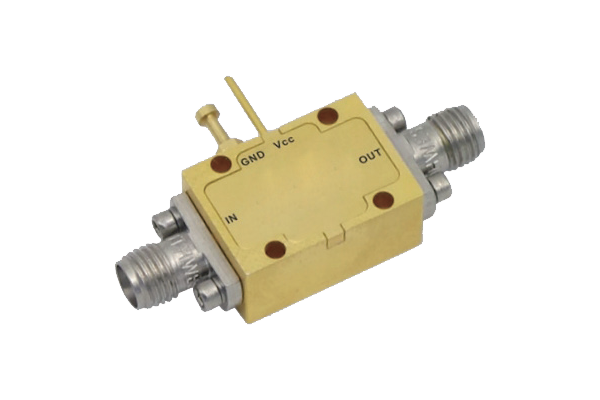
PIN diodes have evolved into key components for microwave and RF applications due to their built-in device properties Their ability to operate with fast state changes and low capacitance while maintaining minimal insertion loss fits them to switching modulation and attenuation tasks. The fundamental operating principle of PIN diode switching rests on adjusting current flow with a control bias. A change in bias voltage transforms the depletion-region width of the p–n junction, affecting conductance. By varying the bias level PIN diodes can be reliably switched to operate at high frequencies with low distortion
PIN diodes find placement inside complex circuit frameworks when precise timing and control is required They may be applied in RF filtering arrangements to selectively pass or reject particular frequency bands. Their high-power endurance makes them appropriate for amplifier power dividing and signal generation functions. The development of compact efficient PIN diodes has increased their deployment in wireless communication and radar systems
Coaxial Switch Design and Performance Analysis
Engineering coaxial switches requires meticulous handling of diverse design variables Coaxial switch effectiveness depends on the switch kind frequency of operation and insertion loss metrics. Minimizing insertion loss and enhancing isolation are primary goals for coaxial switch engineering
Performance analysis requires evaluating key metrics such as return loss insertion loss and isolation. Metrics are assessed using simulation tools theoretical modeling and laboratory measurements. Careful and accurate evaluation is vital to certify coaxial switch reliability in systems
- Simulations combined with analytic methods and practical experiments are standard for coaxial switch evaluation
- Coaxial switch behavior is sensitive to temperature, impedance mismatch and assembly tolerances
- Innovative trends and recent advances in switch design emphasize metric improvements while lowering size and consumption
LNA Design for Maximum Fidelity
Optimizing the LNA’s gain efficiency and operational performance is central to maintaining signal integrity It requires selecting suitable transistors setting optimal bias conditions and choosing the right topology. Effective LNA designs minimize internal noise and maximize clean signal gain with little distortion. Modeling simulation and analysis tools play a central role in evaluating the impact of design decisions on noise. Reducing the Noise Figure remains the design target to ensure strong signal retention with minimal added noise
- Selecting low-noise active devices is central to achieving low overall noise
- Adopting proper optimal biasing is essential to reduce noise creation in devices
- Topology of the circuit strongly affects total noise performance
Tactics like impedance matching noise mitigation and feedback regulation advance LNA performance
RF Signal Routing with Pin Diode Switches

Pin diode switch arrangements provide adaptable and low-loss routing for RF signal management Fast state changes in these devices permit agile dynamic routing of RF signals. Strong isolation and low insertion loss in PIN diodes contribute to reduced signal degradation. They are applied in antenna selection circuits duplexers and phased array antenna systems
The applied control voltage modulates resistance to toggle the diode between blocking and passing states. While in the off state the diode creates a high impedance path that blocks the signal flow. Applying a forward control voltage lowers the diode’s resistance enabling signal transmission
- Furthermore additionally moreover pin diode switches deliver fast switching speeds low power use and compact footprints
Various PIN diode network configurations and architectural designs can achieve advanced signal routing functions. Strategic interconnection of many switches yields configurable switching matrices for versatile path routing
Coaxial Microwave Switch Testing and Evaluation

Detailed assessment and testing validate coaxial microwave switches for optimal function across electronic systems. A range of factors like insertion reflection transmission loss isolation switching rate and bandwidth affect switch performance. A full evaluation process measures these characteristics under various operating environmental and test conditions
- Additionally furthermore moreover the assessment must address reliability robustness durability and tolerance to severe environments
- Ultimately comprehensive evaluation outputs provide critical valuable and essential guidance for switch selection design and optimization for targeted uses
Comprehensive Survey on Minimizing LNA Noise
LNAs are indispensable in wireless RF communication systems because they raise weak signals while suppressing noise. This review presents a thorough examination analysis and overview of noise mitigation strategies for LNAs. We analyze investigate and discuss main noise origins such as thermal shot and flicker noise. We also cover noise matching feedback network techniques and ideal bias strategies to mitigate noise. The review highlights recent progress in LNA design including new semiconductor materials and circuit concepts that lower noise figures. By elucidating noise reduction principles and applied practices the article aims to be a valuable resource for engineers and researchers building high performance RF systems
PIN Diode Uses in Rapid Switching Systems

PIN diodes possess remarkable unique and exceptional traits that fit them well for high speed switching systems Small capacitance together with low resistance enables rapid switching to satisfy precise timing needs. PIN diodes’ adaptive linear voltage response permits precise amplitude modulation and switching. This versatility flexibility and adaptability makes them suitable applicable and appropriate for a wide range of high speed applications Use cases cover optical communications microwave circuitry and signal processing devices and equipment
Coaxial Switch Integration and IC Switching Technology
IC coaxial switch technology represents a major step forward in signal routing processing and handling for electronic systems circuits and devices. These ICs control manage and direct coaxial signal flow providing high frequency capability with low latency propagation and insertion timing. Miniaturization through IC integration results in compact efficient reliable and robust designs fit for dense interfacing integration and connectivity scenarios
- By carefully meticulously and rigorously applying these approaches designers can realize LNAs with outstanding noise performance enabling sensitive reliable electronic systems With careful meticulous and rigorous deployment of these approaches developers can accomplish LNAs with outstanding noise performance enabling trustworthy sensitive electronics By meticulously carefully and rigorously adopting these practices designers can deliver LNAs with excellent noise performance supporting reliable sensitive systems With careful meticulous and rigorous execution of these strategies designers can obtain LNAs exhibiting excellent noise performance for sensitive reliable systems
- Application fields encompass telecommunications data communications and wireless networking
- Aerospace defense and industrial automation represent important application areas
- Consumer electronics audio video equipment and test and measurement systems also use IC coaxial switch technology
Considerations for LNA Design at Millimeter Wave Frequencies

LNA engineering for mmWave bands involves dealing with increased attenuation and heightened noise impacts. Parasitic capacitances and inductances become major factors at mmWave demanding careful layout and parts selection. Minimizing mismatch and maximizing gain remain critical essential and important for mmWave LNA performance. Choice of active devices such as HEMTs GaAs MESFETs or InP HBTs is crucial to reach low noise figures at mmWave. Additionally furthermore moreover careful design implementation and optimization of matching networks is vital for efficient power transfer and impedance matching. Package-level parasitics should be considered because they may impair LNA function at mmWave. Implementing low-loss transmission lines along with proper ground plane design is essential necessary and important for reducing reflection and ensuring bandwidth
PIN Diode RF Characterization and Modeling Techniques
PIN diodes are vital components elements and parts used throughout numerous RF switching applications. Accurate precise and detailed characterization is critical for designing developing and optimizing reliable high performance circuits using PIN diodes. This process includes analyzing evaluating and examining the devices’ electrical voltage and current traits including resistance impedance and conductance. Frequency response bandwidth tuning traits and switching speed latency response time are part of the characterization
coaxial switchMoreover additionally the crafting of accurate models simulations and representations for PIN diodes is essential crucial and vital for predicting RF behavior. Various numerous diverse modeling approaches exist including lumped element distributed element and SPICE models. Choosing the right model simulation or representation depends on specific detailed particular application requirements and desired required expected accuracy
High End Approaches for Low Noise Amplifier Design
Developing LNAs involves diligent consideration of circuit topology and components to obtain optimal noise performance. Emerging novel semiconductor developments have allowed innovative groundbreaking sophisticated design strategies that cut noise considerably.
These techniques often involve employing utilizing and implementing wideband matching networks adopting low-noise high intrinsic gain transistors and optimizing biasing schemes strategies or approaches. Additionally advanced packaging solutions and thermal management approaches are key to cutting noise contributions from external factors. Through careful meticulous and rigorous implementation of these approaches engineers can achieve LNAs with exceptional noise performance supporting sensitive reliable systems
